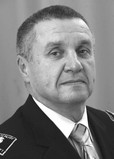Improvement of athletic locomotion technique of based on agreement of applied force with force of gravity
Фотографии:
ˑ:
Dr.Hab., Professor G.V. Rudenko1
Dr.Sc.Tech., Professor V.G. Gorelikov1
PhD, Associate Professor V.K. Ivashev1
1Saint-Petersburg Mining University, Saint-Petersburg
Objective of the study was to improve the technique of athletic locomotions based on the agreement of applied force with the force of gravity.
Methods and structure of the study. To study the university mountaineers’ technique of locomotions based on the agreement of applied force with the force of gravity, we considered such parameter of force as a vector. The vector of applied force in most athletic locomotions should pass through the center of gravity of the system. Otherwise, there will be an undesirable rotation.
During the experiment, we took measurements to determine the degree of agreement of force applied by the athletes while going up the climbing wall with the existing force of gravity. By measuring the angle between the gravity vector and the applied force vector, we were able to determine the optimal value of the applied force. The starting point for measurements was the gravity vector directed vertically down.
Results of the study and conclusions. We conducted a comparative analysis of the athletes’ technique of locomotions during climbing, when the vector of gravity and that of the force applied with the left hand were or were not on the same line.
Proceeding from the received data on the agreement of applied force with the force of gravity, it is possible to adjust the process of technical training of athletes in various sports in order to achieve the optimal form of locomotions when mastering technical actions. In most cases, once coaches have mastered this methodology through the prism of measurements of the angle between the force vectors, visual observation of the athletes’ locomotions and their appropriate correction are enough thereafter.
Keywords: sports, technology, locomotion, indicators of sports mastery, force, improvement of locomotion actions.
References
- Bernstein N.A., Zinchenko V.P. [ed.] Biomekhanika i fiziologiya dvizheniy [Biomechanics and physiology of movements]. M.: Institute of Practical Psychology. Voronezh: MODEK publ., 1997. 608 p.
- Verkhoshanskiy Yu.V. Osnovy spetsialnoy fizicheskoy podgotovki sportsmenov [Fundamentals of special physical training for athletes]. M.: Sovetskiy sport publ., 2014. 352 p.
- Larionova M.N., Terekhin V.S., Bobrov I.A. Proektirovanie modelnykh kharakteristik osnovnogo khoda akrobaticheskogo rok-n-rola na osnove biokhimicheskogo analiza [Biomechanical analysis of the key element modeling in acrobatic rock-n-roll]. Teoriya i praktika fiz. kultury. 2019. no.4. pp. 21-23.
- Lysenko V.V. Biomekhanika dvizheniy cheloveka [Biomechanics of human movements]. Study guide for phys. ed. universities. Krasnodar: KSAPC publ., 1996. 159 p.
- Mikhaylovskiy S.P., Gromov M.M., Selyukin D.B. Sovershenstvovanie tehniki odnovremennogo besshazhnogo khoda na osnove modelnykh kharakteristik lyzhnikov-gonshchikov vysokoy kvalifikatsii [Double poling technique excelling models customizable to elite cross-country skiers' model charcateristics]. Teoriya i praktika fiz. kultury. 2019. no. 3. pp. 76-78.
- Shalmanov A.A., Lukunina E.A., Medvedev V.G. Metody issledovaniya dvigatelnykh deystviy i tekhnicheskogo masterstva sportsmenov v sportivnoy biomekhanike [Methods for study of motor actions and technical skills of athletes in sports biomechanics]. Nauka o sporte: Entsiklopediya sistem zhiz¬neobespecheniya [Sport Science: Encyclopedia of Life Support Systems]. Moscow: UNESCO publ., 2011, pp. 165-178.



 Журнал "THEORY AND PRACTICE
Журнал "THEORY AND PRACTICE